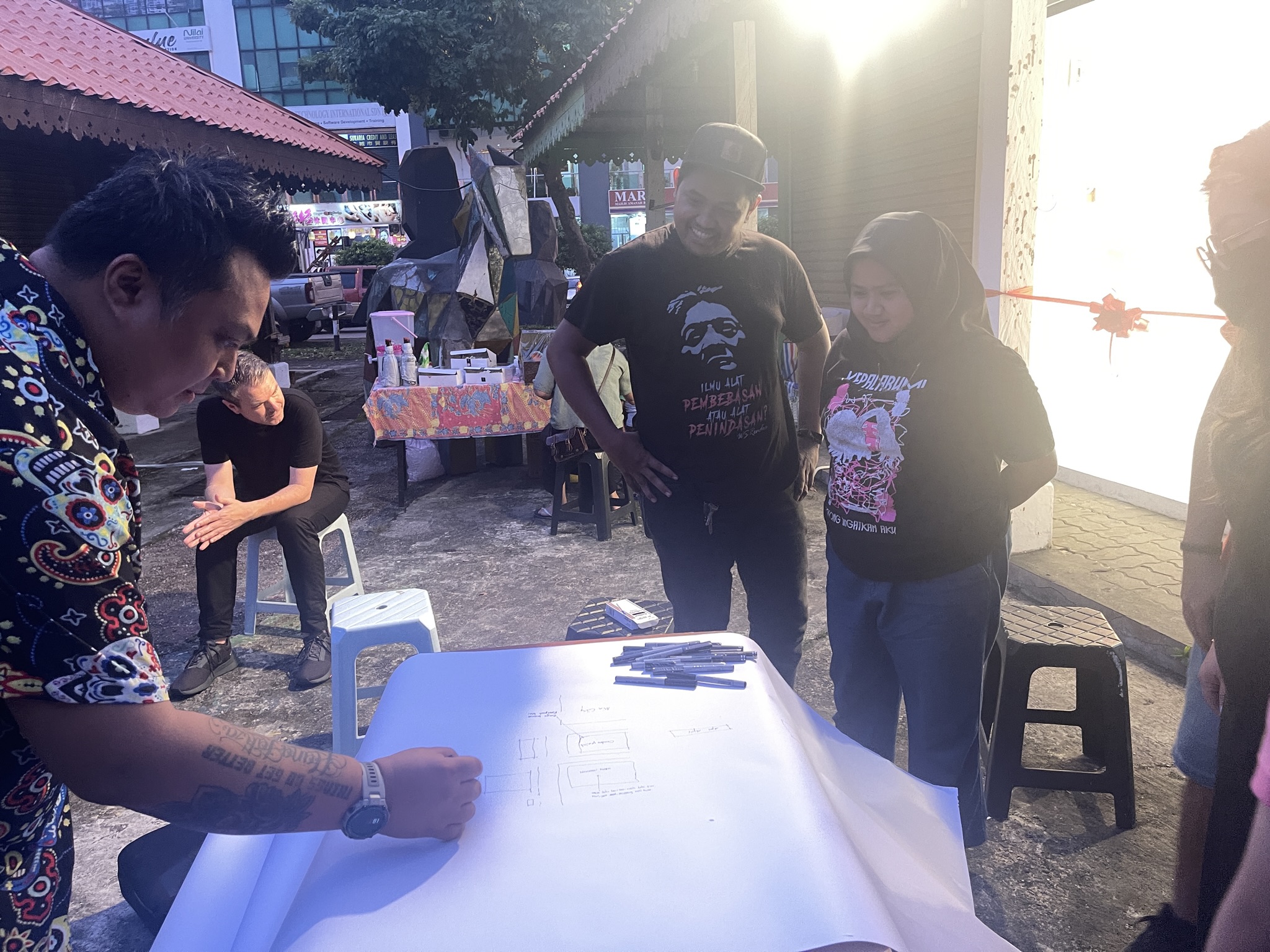
Egn
KOTA KINABALU (Jan 27): Every artwork has a story to tell, and Egn, a Sabahan contemporary artist combined map and captions into a storytelling piece he called Spatial Biography Documentation.
This ‘mapping’ art started when he first documented ‘Dari Kali Ke Durian Tunjung’, a personal project telling his story growing up in two different places, Keningau and Labuan, where many corners and buildings of Keningau and Labuan towns were digitally mapped and captioned in very personal sentences such as “No one has ever quarrelled here, this is the happiest place on earth”, — referring to his grandmother’s home in Kampung Kali, Keningau.
Egn also shared his experience as a child during the 1986 general election, where the ‘silent’ riot occurred at various locations in Sabah.
Even as a child, it was one of the very important parts in his life but not enough documentation for him to learn more.
“At that time I was in Labuan because my father worked there. I vividly remember we were not allowed to go out and all posters or pictures related to political parties could not be displayed.
“People are also not allowed to talk or discuss about politics. I was just a child at that time but was told not to talk much,” he said.
His experience was also recorded in the Dari Kali Ke Durian Tunjung project.
He believed his documentation will be a reference for his children to learn more about him, and his identity.
Egn, or Harold Reagan Eswar who started painting professionally in 2009 is also a trained architect attached with the Kota Kinabalu City Hall.

Visitors looking at Egn’s artworks at Kota-K Studio.
He has been actively participating in numerous exhibitions, and his newly found mapping art is currently available for viewing at the newly opened Kota-K Studio at Laman Seni, Kota Kinabalu.
“I’m actually not sure how to call, or what type of art is this. I asked several professors to ask for their opinion but most of them never saw this kind of art.
“Some said it is called social mapping, but I prefer calling it a Spatial Biography Documentation because it tells story of people.
“I treat this project as a human being because the story is intimate, it expresses feelings, and in fact we will learn about Sabah and its people.
“Why many tourists ended up staying in Sabah and consider our state as their second home? Is it because of the people, or what? Why migrants came to Sabah and never go back? Because they feel some kind of belonging, or what? We need to acknowledge this,” he said.
Called ‘Dengan Cinta’ (with love), the one-month exhibition from Jan 17 to Feb 2023 is showcasing three artworks by Egn including ‘Dari Kali Ke Durian Tunjung’.
The other projects are The Sin Lian Huat Documentation and Dari Pagalan Ke Motoyasu.
The Sin Lian Huat Documentation was a map of Keningau town, captioned by his skateboarding friends in Keningau from the 1990s who mostly shared their memories growing up as teenagers. This project was commissioned by the Georgetown Art Festival during the lockdown period.
His recent project, ‘Dari Pagalan Ke Motoyasu’ was telling stories, from his own perspective about Japan during his visit in 2014. This project was selected by The Japan Foundation, Kuala Lumpur to be in its virtual art exhibition Kaleidoscope Japan.

Visitors participating in Egn’s latest project about Kota Kinabalu city.
On the next project, Egn is currently focusing on Kota Kinabalu city. He asked people to draw and caption — it’s all about their perspective on “what is KK to them”.
“When I’m drawing I normally follow scale, and the colours are also green for trees and yellow for sun. But this project is different because it is about the people, and their perspective matters here.

Egn (left) demonstrates Spatial Biography Documentation.
“I will try to invite some of visitors in this gallery to draw, and I might go to schools to share this art because this is exactly how our Kajian Tempatan subject in school should be, to document and tell stories about our own place.
“To me it is important to document about our own place because even in textbooks there are not many stories about us there. As an artist I don’t do research on history but making art like this will attract more people to document their stories, which is our identity as Sabahans,” he added.
Looking forward, Egn is hoping Spatial Biography Documentation will be another branch of art to document history, event and story of locals as a reference for the future generations.
